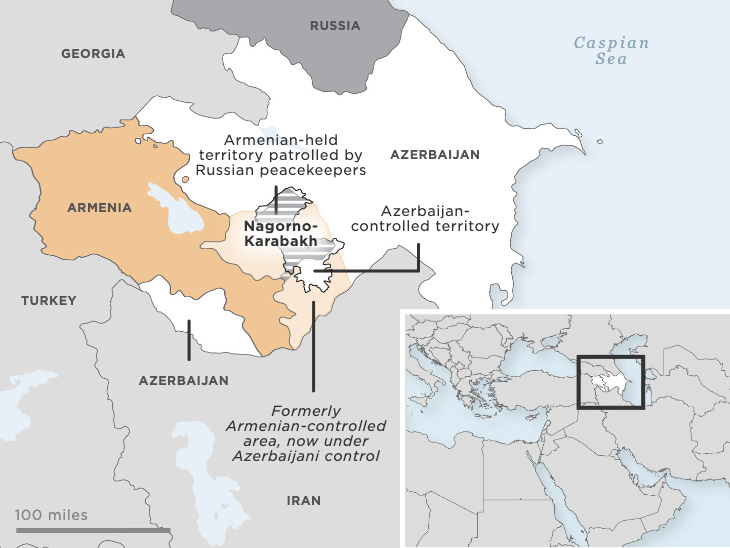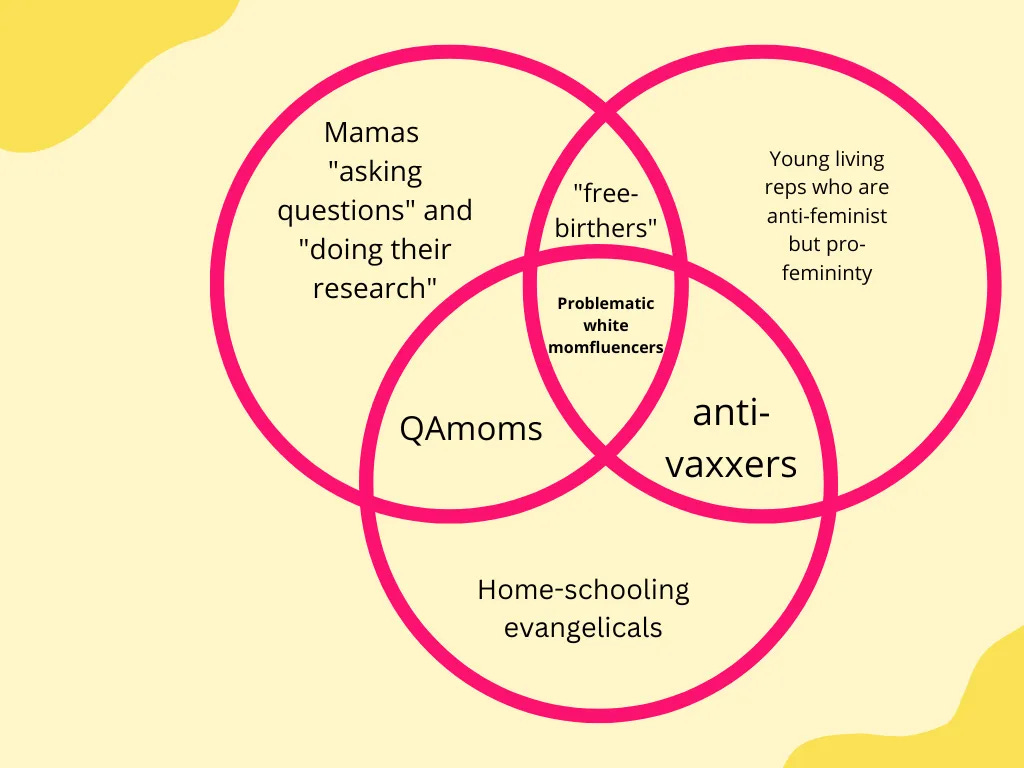#5SmartReads - September 22, 2022
Hitha on Armenia, toxic masculinity, and America's obsession with snacking
The deadly clashes between Armenia and Azerbaijan, explained (NPR)
While most of the Western press is focused on Russian invasion of Ukraine, other countries in the region are heating up with the deployment (and unfortunate loss and injuries to their troops).
Nagorno-Karabakh - a territory between Armenia and Azerbaijan that has been long been a battlefield between the two countries - is once again a hot zone, with over 100 confirmed deaths of service members before the cease-fire was announced.
So what is it about Nagorno-Karabakh that Armenia and Azerbaijan take up arms against one another, every few years or so?
The region is largely occupied by ethnic Armenians, though international authorities recognize the territory as Azerbaijan:
image via NPR
Russia (naturally) has been involved in this territory dispute, sending in a peacekeeping force to patrol much of Nagorno-Karabakh on behalf of the Armenians. Meanwhile, Azerbaijan claimed the surrounding lands of Nagorno-Karabakh with the help of Turkey.
While this is not as widely reported as other wars at the moment, it is important to be aware of and something to expect as Russia focuses on its invasion of Ukraine and its resources are limited to intervene in other disputes in the former USSR.
The problem with toxic masculinity (In Pursuit of Clean Countertops)
Behind the perfect images of sparkling kitchens, beautiful family pictures, and pale pink graphics with swirling handwriting fonts, there is this deeply concerning corner of Instagram with tremendous influence:
image via Sara Petersen
Apparently, toxic masculinity exists because traditional masculinity is being challenged, and testosterone levels are dropping in this generation of boys.
Nothing I say about this piece will do it justice, so I’ll leave you with a quote from Sara that keeps running through my head, especially as we see the endgame of evangelicals and MAGA Republicans to reimagine this nation as a fundamentalist Christian theocracy:
“Family>everything else” means that a lot of “everything else” can be ignored, indirectly damaged, and deliberately destroyed under the guise of “family values.”
Americans see the media as critical to democracy. Now what are we going to do with that? (The 19th*)
The “one nation, under capitalism” run that has been the governing doctrine of our federal government for the past 40 years is catching up with us. In my opinion, it’s left us a weaker nation overall, and further from the shining city on a hill that we could be.
There are just so many examples of this (and models of how the public and private sector can work efficiently at scale in pursuit of the public good). But let’s talk about the media.
Why was the American press reporting on the death and funeral of Queen Elizabeth with wall-to-wall coverage while Puerto Rico has lost power and battling yet another massive hurricane? Because it’s profitable for the networks.
Why do we see the same headlines, trending topics, and chyrons running on cable news networks - and it spikes a strong emotional reaction from us every time we see it? Because you’ll be more likely to click the story or watch that segment - and the more time you spend on that website or channel, the more advertising revenue they generate.
The most important news is often not the most profitable news. But in a time when we need informative reporting from a diverse group of perspectives, shared calmly, we’re being fore-fed the news that freaks us out and causes us to doomscroll or doomwatch.
Errin Haines carefully analyzes and reports on the results of The 19th*’s poll with SurveyMonkey to share this important insight:
“An increasingly diverse country does not see itself reflected in the media. Communities of color, LGBTQ+ people and marginalized groups are still underrepresented in both who covers the news and what news is covered. Some White Americans view the country’s diversity and its reflection in the media as a threat to their representation. Audiences are skeptical that we can cover their concerns or communities fully. That concern was seized on, sometimes with violent language, by the former president, who labeled the press an enemy of the people.”
This is my North Star for #5SmartReads - to share different perspectives and underreported stories as a means of curiosity and education with a strong point of view, but without judgement (again, I’m human and do fail on this part). I hope you not only read this series every day, but subscribe to the publications I share articles from to help diversify your news diet. And I highly, highly recommend The 19th*.
How America turned into a nation of snackers (CNN)
One nation, under God? Try one nation, under Snack?
The United States is divided on a great many things, but snacks (and Dolly Parton) are what unifies us.
“The US snack market grew from about $116.6 billion in 2017 to an estimated $150.6 billion in 2022, and is forecasted to grow to $169.6 billion in 2027, according to Euromonitor International, which includes fruit snacks, ice cream, biscuits, snack bars, candy and savory snacks in the category.”
That’s great for the bottom line of our biggest food manufacturers. But what about our health?
It’s one thing if your snacks are mostly fruits, vegetables, or largely unprocessed. But most of the foods we think of when we think “snacks” - individually-packed bags of chips and candy or bars - are often formulated to be addictive (highly recommend reading Salt Sugar Fat to learn more about this).
By no means am I a paragon of healthy eating (my Taco Bell obsession is pretty clear about that, as well as the 6 bags of chips sitting in my pantry). But there’s a time and place for the quick grab snack or when you have that hankering for crinkle cut chips and onion dip, and when you have some time to grab hummus and chopped carrots from the fridge.
I also see startups truly disrupting this space in giving us packaged options that are formulated for both health and shelf stability - Partake Foods, Moonshot Snacks, and Afar Foods (I LOVE their savory bars).
Snack well, my friends.
The unequal toll of climate disasters (Axios)
“People of color and people from low-wealth households don't get the ability to recover, especially if they're in spaces that are constantly faced with disasters,” Cassandra Davis of the University of North Carolina at Chapel Hill tells Axios. Davis is currently working with FEMA — through funding from the Department of Homeland Security — on a project examining inequitable distribution of disaster aid. “As we think about recovery, short and long term, they're more likely to be left behind.”
People of color are not just more likely to face the bulk of the consequences of systemic racism, they also do not get the resources or time and space to recover from them. And climate change is only exacerbating that divide even wider.
Hurricane Fiona is just the latest example of that.
While it’s inspiring to see nonprofits rally to get resources to these affected areas and it makes us feel good to make a donation, it doesn’t do much to solve the root causes and invest in just, equitable solutions. Awareness is one first step, and getting more people aware of this grave injustice is another (i.e. the public square, as my friend Emily talks about often). I look forward to reading Davis’ report on her project, and am hopeful (and skeptical) that Puerto Rico gets the resources they need not just to address Fiona’s damage, but invest in structural improvements to help fortify this part of the United States the way we would any of the other states.
As a start.






